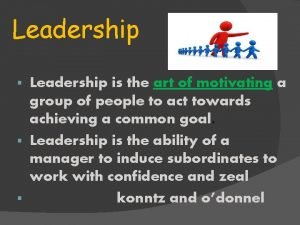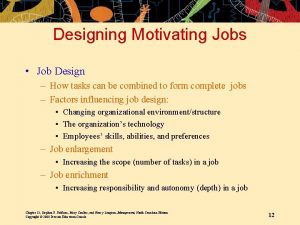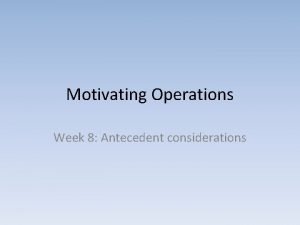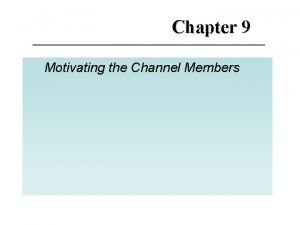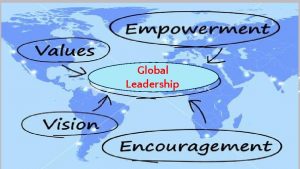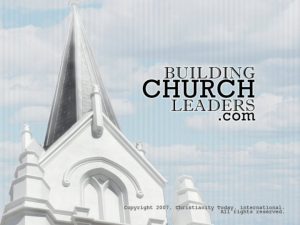Leadership is the art of motivating a group












- Slides: 12

Leadership is the art of motivating a group of people to act towards achieving a common goal. § Leadership is the ability of a manager to induce subordinates to work with confidence and zeal § konntz and o’donnel §

Nature of leadership Leadership is the personal quality it exits only with followers It exits for the realisation of common goal Leadership styles do change under different circumstance. Leadership is neither bossism nor synonymous with management. Leadership is the function of stimulating the followers to strive willingfully for group objectives.

Theories of leadership The trait theory Charismatic leadership theory The behavioural theory The situational theories The follower theory

Leadership styles ü ü ü Autocratic or authoritarian style leader Laissez fare or free-rain style leader Democratic or participative style leader Bureauceatic or rules-centred leadership Manipulative leadership style Paternalistic style leader

LIKERT’S MANAGEMENT STYLES AND LEADERSHIP SYSTEM 1 - EXPLOITATIVE AUTHORITATIVE SYSTEM 2 - BENEVOLENT AUTHORITATIVE SYSTEM 3 - CONSULTATIVE SYSTEM 4 -DEMOCRATIC

Formal and Informal Leaders Formal leaders is one who is formally appointed or elected to directly control the action of subordinates. he is the one created by formal structure and accountable to those who have elected him in a formal way. Informal leaders are not formally recognised the informal leaders have only one task to perform i. e. , to help their followers in achieving their individual and group goals.

QUALITIES OF GOOD LEADER GOOD PERSONALITY INITATIVE MOTIVATION SKILL COMMUNATING SKILL HONESTY SELF CONFIDENCE COURAGE TO ACCEPT RESPONSIBILITY

LEADERSHIP FUNCTION SETTING GOALS ORANISING DIRECTION AND MOTIVATION CO-ORDINATION LINK BETWEEN MANAGEMENT AND WORKERS Initiating Action

Importance of leadership It improves motivation and morale It acts as a motive power to group efforts It acts as an aid to authority It is needed at all levels of management It provides the basis for co-operation It recitifies the imperfectness of formal organisational relationships

Process and techniques of effective leadership THE leader should consult subordinates in framing crucial policies He should attempt to develop voluntary cooperation from his subordinates He should exercise authority where ever necessary HE should build confidence and zeal in subordinates He should listen to his subordinates He should communicate effectively He should follow the principle of motivation

The MANAGERIALGRID A graphical representation of a 2 dimensional view of leadership style. Based on : 1. ‘concern for people’ 2. ‘concern for production’ Grid identifies 5 basic styles of leadership IMPROVERISHED MANAGEMENT COUNTRY CLUB MANAGEMENT TASK MANAGEMENT TEAM MANAGEMENT MIDDLE OF THE ROAD

 Communating
Communating Motivating parallelism
Motivating parallelism How to motivate esl students
How to motivate esl students Language focus
Language focus Designing motivating jobs
Designing motivating jobs Dimensions of behavior altering effects are:
Dimensions of behavior altering effects are: Generalized conditioned reinforcement
Generalized conditioned reinforcement Motivating and satisfying employees and teams
Motivating and satisfying employees and teams Motivating operations definition
Motivating operations definition Motivating sales force
Motivating sales force Channel motivation
Channel motivation Staffing directing and controlling
Staffing directing and controlling Motivation for software developers
Motivation for software developers
